Promoting better postures from the start
No matter how much we try, kids and devices seem to go hand in hand these days.
Despite this, I am an advocate of delaying and minimizing the use of any device for as long as possible.
As a Physiotherapist and mother of two, one big problem I have with devices is the terrible postures that are often adopted by the user and frequently for prolonged periods. We have all seen it. The slouching with head forward position – most children and adults have experienced it.
The lucky ones get away with no problems. I see the unlucky ones, commonly with neck strain, headaches and backpain. Fortunately when identified and treated early these can be addressed quickly. The long-term issue is the increasing numbers of children and teenagers presenting with general deconditioning from the relative inactivity created by spending more and more time on their device.
In 2017, a poll by the Royal Children’s Hospital Melbourne found that teens spent an average of 43.6 hours on devices per week, or roughly 6.2 hours each day. Given the proliferation of social media in the past 5 years, it is likely that this number has significantly increased.
Extended periods in slouchy postures results in the core muscles being inhibited from working at optimal levels, and this has a knock-on adverse effect on their activity and sporting performance.
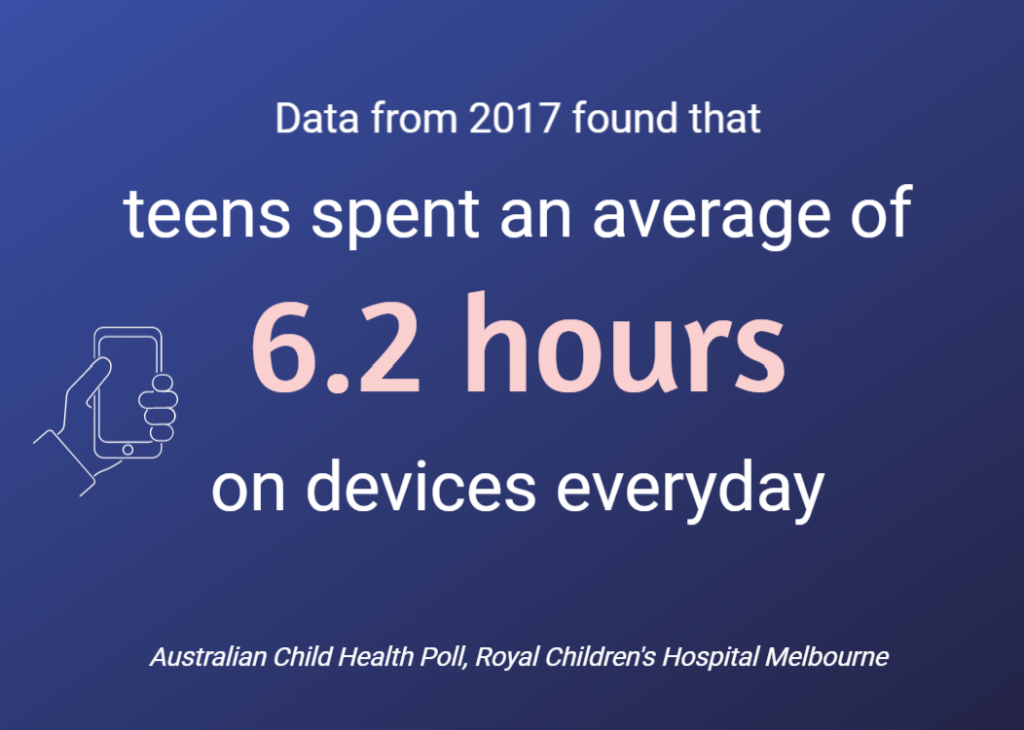
It is starting younger as well. In 2020, just under half (46%) of Australian children aged 6 to 13 used a mobile phone, which is on the slow increase from 2015 (Roy Morgan Young Australians Survey, 2020).
FATIGUE, FLIP & ROLL
I have developed this concept, used it with my own children who are now 14 and 11 years old and have taught many adult clients over the years to use this technique with their own children with great success. The concept of changing positions regularly and being supported where necessary is common in Ergonomics however, I have added the spinal extension and strengthening of trunk and arms as well so each position is comfortable but completely passive.
It is simple and easy to teach the child. Plus by increasing their awareness, I believe it sets up the child for better future postures and habits.
The fatigue, flip & roll is designed for the little ones when they start to use devices and need guidance with their position or device use.
Remember the ideal is to delay device use for as long as possible.
This is a simple concept that involves starting in certain position until the child is starting to get tired then either ceasing use of device or flip to second position. Stay in second position until again the child is starting to get tired then roll to the next position and so on.
Emphasis is on..
- ensuring the child is comfortable initially by use of pillows, cushions and supports
- monitoring the child to identify when they are starting to show signs of the start of fatigue. This involves interaction with supervising adult to begin with until the child is able to identify themselves.
Success depends on..
- detecting pre fatigue signs
- and not taking the child to or past fatigue, which negatively reinforces the fatigue, flip & roll concept and increases the likelihood of giving up.
The benefit for the children is that they can, to a degree, control the use of their device. Our house rule is that they can stay on the device as long as they are comfortable, tolerating each position. This empowers the child and so increases their compliance.
Of course you trump everything because when you sight pre fatigue signs, you tell them to move onto the next position or another activity.
Pre-fatigue Signs
Starting to fidget
Dropping of the head when on tummy or leaning to the side = loss of ideal posture
Losing interest in the device
So, what are the steps?
Step 1. Start laying on tummy raised up on elbows
- Use pillow / cushion under the tummy to support the lower back.
- Ensure cushioning under the elbows if resting on hard floor surface by mat or blanket.
- Initially you may use support behind the device to prop it up so the child can concentrate on propping themselves up on elbows rather than holding the device. When shoulder and upper back strength is more developed, encourage the child to hold the device independently.
- Monitor for pre fatigue signs, commonly with the child starting to fidget, lose ideal posture or interest in the device. Education of the child here is important to work them through what they are experiencing and assisting them to change to next posture or cease the activity.
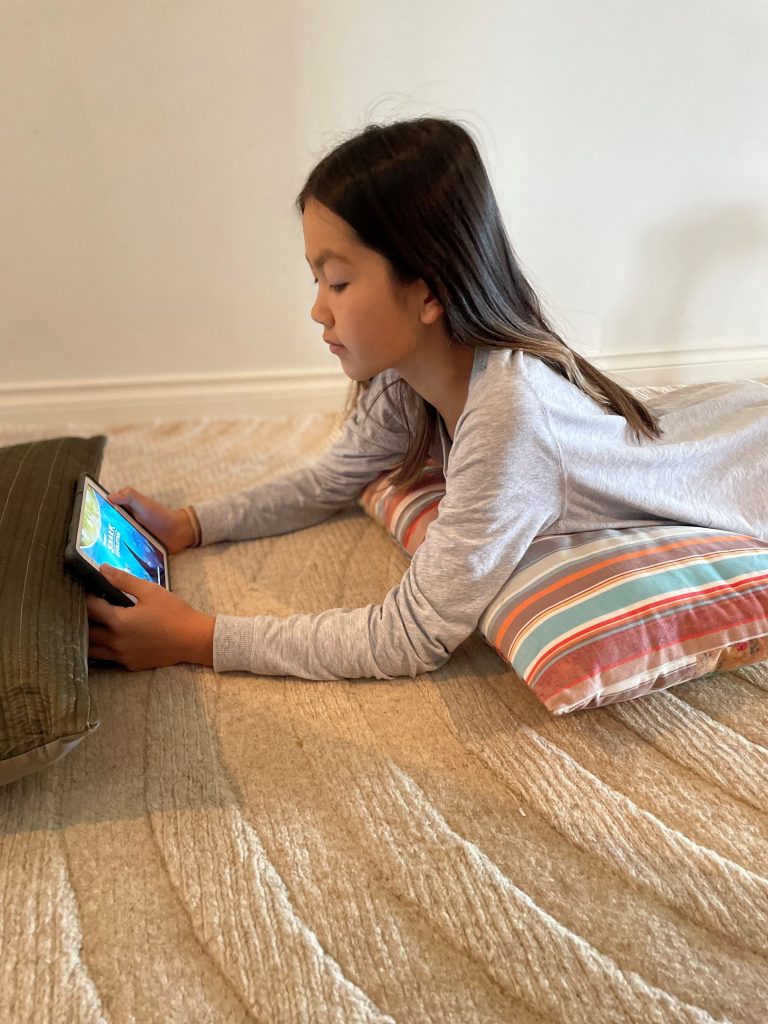
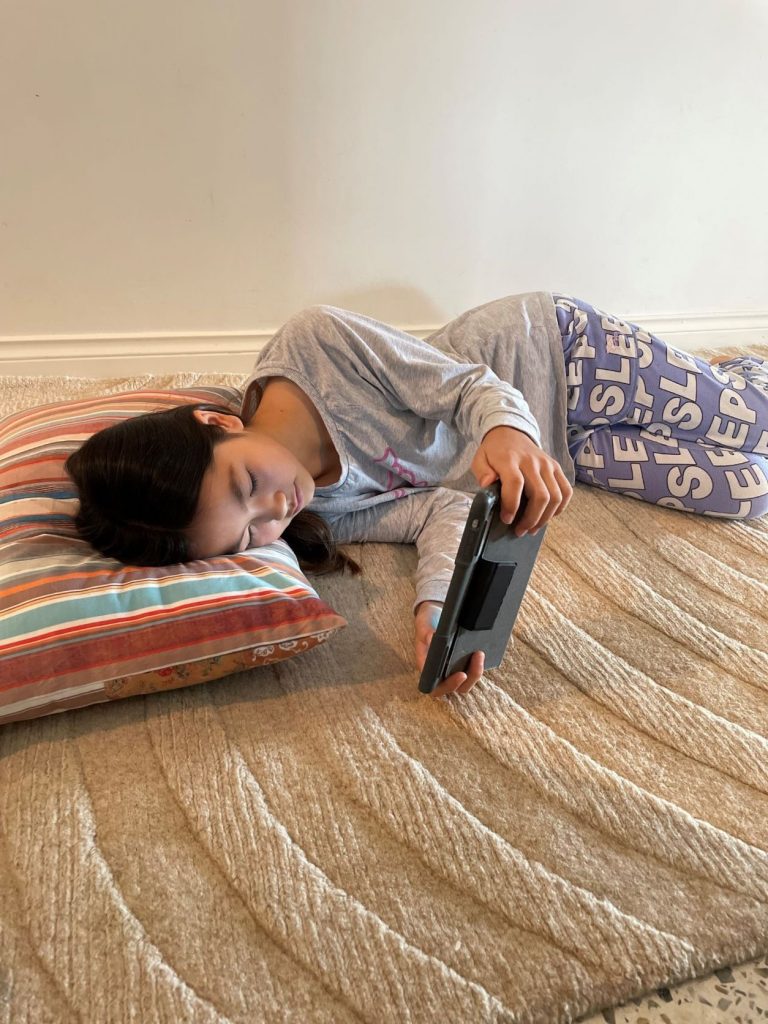
Step 2. Flip onto side
- Pull the pillow under the tummy to under the head so neck is supported.
- The child holds the device as supported by the ground +/- other supports as necessary.
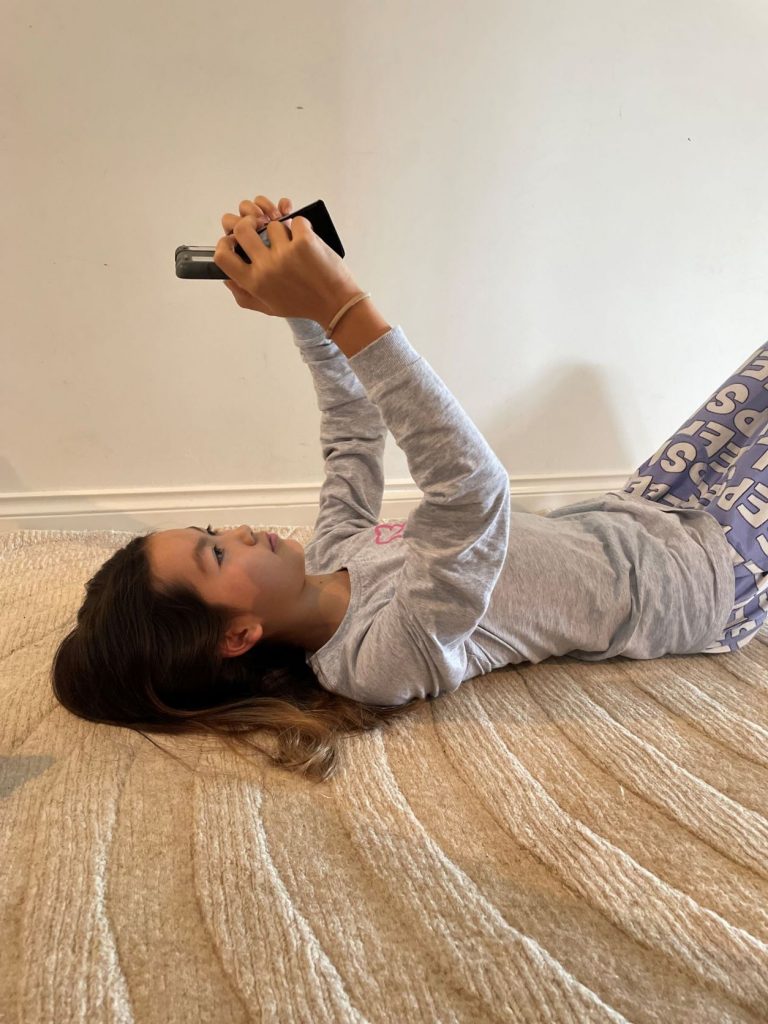
Step 3. Roll onto back
- Pillow under head is not essential depending on the comfort of the child.
- The child holds the device up over head with both hands.
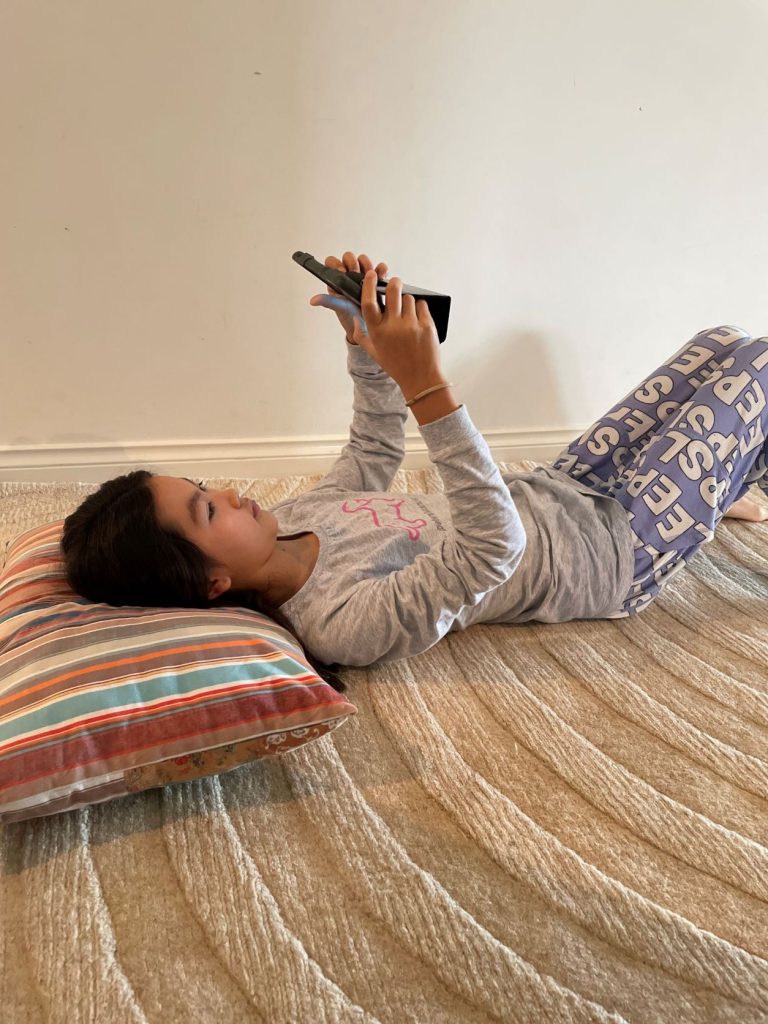
Step 4. Roll onto other side
- Pull the pillow under the tummy to under the head so neck is supported.
- The child holds the device as supported by the ground +/- other supports as necessary.
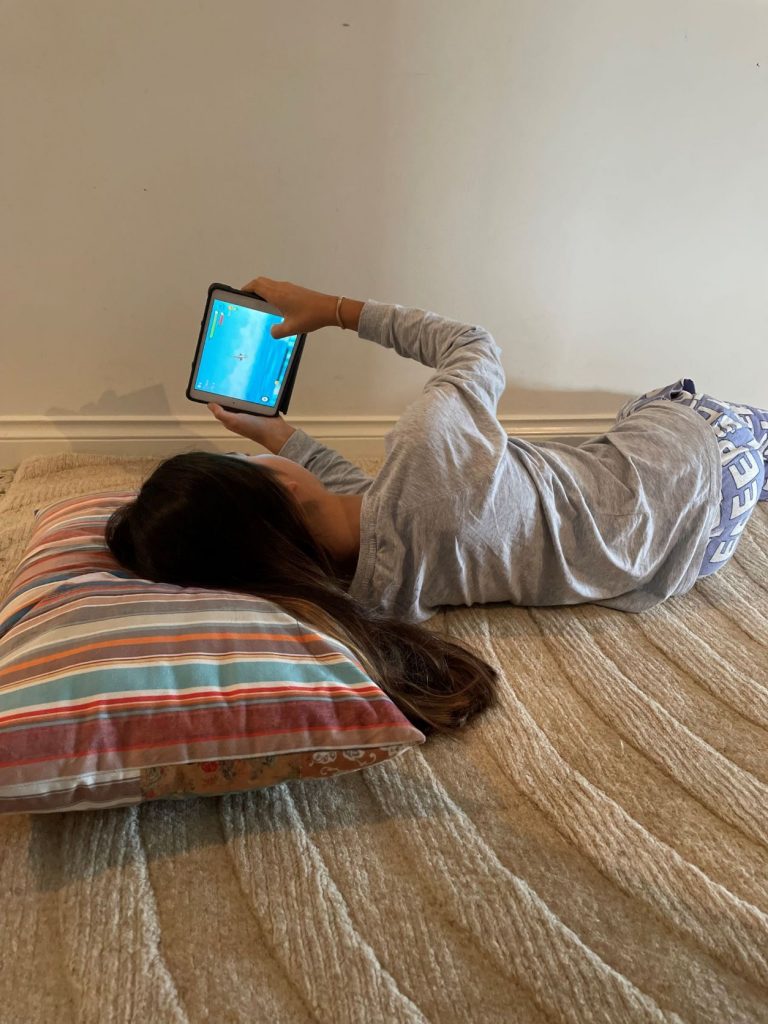
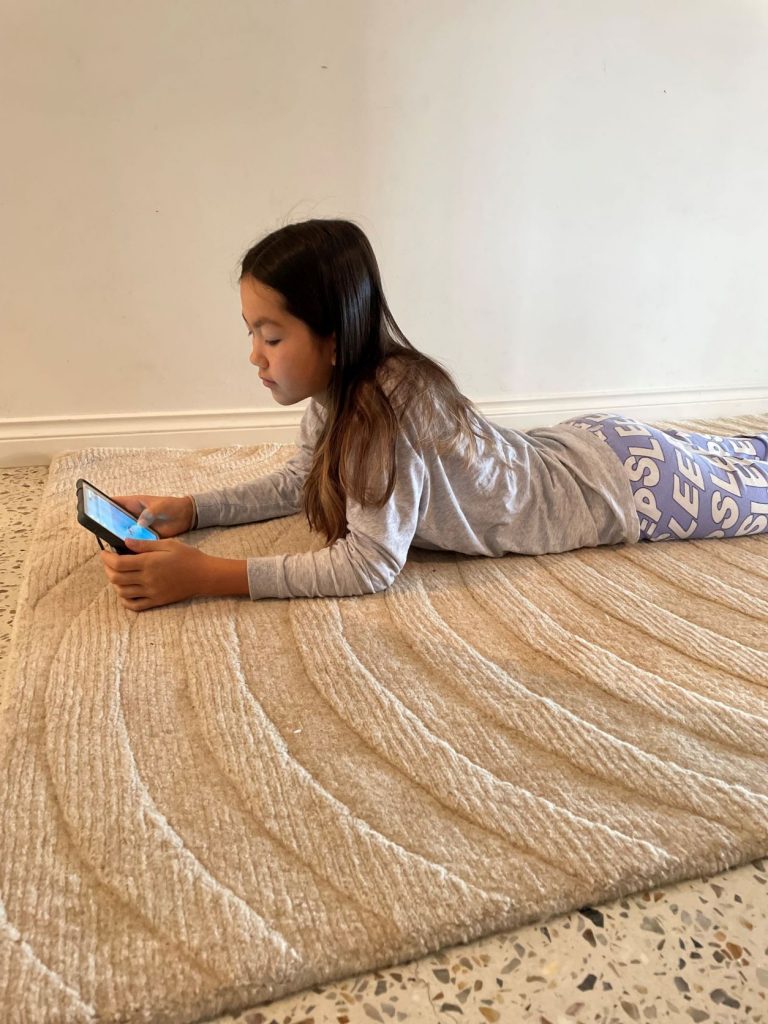
5. Flip onto tummy and repeat!
For the younger children, it may be used as a fun game to Flip and Roll to your instructions when you note pre fatigue signs, rather than being a punishment posture. It can even be used with a book or toy. It is essential this is fun for the child, then it will be win win situation for all.
Obviously there are other postures that can be adopted including sitting. The main point here is that the spine is supported in comfortable natural position, neck is aligned and supported and the device is raised to eye height – see picture
Should you have any questions regarding this concept please feel free to email me directly at ness@infusionpilates.com.au
We offer classes specific to the needs of KIDS AND TEENAGERS. The current program is during term 3 of school. This is a 10 week program that is run each school term on Thursdays at 5pm. Run by our experienced Physiotherapist Marilie Birkett. Please call 9448 8393 to book in. Physiotherapy rebates maybe available
If you have any specific concerns regarding your child or teen that requires Physiotherapy assessment we would be pleased to see you individually. Please book in for a physiotherapy consultation 9448 8393
References
https://whatasleep.com.au/blog/smartphone-statistics-australia/ – stats on phone use in Australia
https://www.rchpoll.org.au/wp-content/uploads/2017/06/ACHP-Poll7_Detailed-Report-June21.pdf


